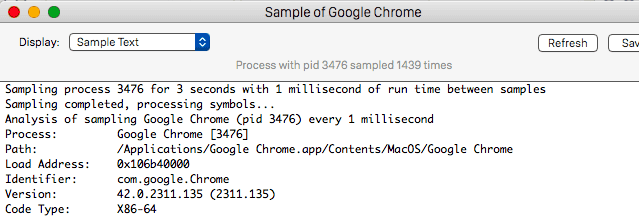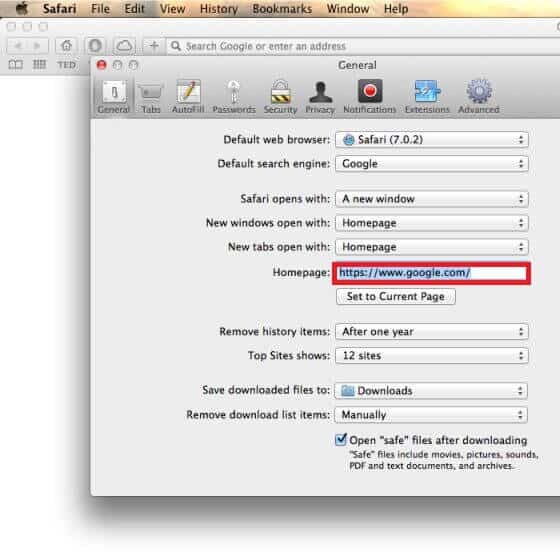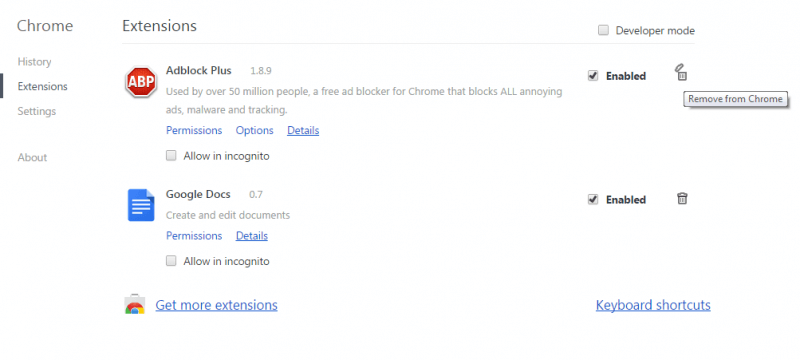Legend Deploy
Legend Deploy is a potentially unwanted application designed to take control of your Mac browsers and alter their settings without your permission. The purpose of Legend Deploy is to reroute your searches to pages that earn revenue based on how many of their ads get clicked.

Browser ads and page-redirects are the worst – they can show up everywhere on your screen at any given time and obstruct your current online activity with their invasive presence. In most cases, you could deal with that issue by staying away from those sites on the Internet that are way to aggressive with their advertisements. Also, ad-blockers can also help you stop at least some of the more common forms of web advertisements. These methods, however, could only work if the ads you are facing are coming from the sites that you visit. On the other hand, if you have a hijacker like Legend Deploy in the computer, attached to your Safari, Firefox, Chrome or another browser, then your only option is removing the invasive app in order to stop the ads from showing. Other things you could notice are changes to the search engine service, the new-tab and homepage address, the buttons of your toolbar and to the entries in the extensions manager.
Legend Deploy for Mac
Legend Deploy for Mac is a site-promoting tool that aims to take over your Mac’s main browser and force it to open certain sites without your interaction. Legend Deploy for Mac can be extremely irritating and can severely disrupt your online activities as long as it stays attached to the browser.
The changes made to the browser by the hijacker combined with the frequent display of nagging pop-ups, pop-unders, flashy banners, and page-redirects to different pages that are also likely filled with ads could all be really unpleasant and make you want to reinstall your browser or switch to another one. The problem is that this would probably not solve anything in the long term. Browser hijackers such as the Legend Deploy and Stateful Firewall app are usually able to install themselves in every browser in your system that you set as default and re-installing your current browsing program is also probably not going to be enough. Another problem is that most hijackers have not visible and easily-accessible uninstallation option which is why you may need the help of the guide below in order to successfully and fully uninstall the invasive software in order to ensure that it can no longer flood your screen with annoying advertisements.
What is Legend Deploy?
Legend Deploy is a browser hijacker that will monitor your browsing habits and analyze the gathered info in order to figure out your current preferences. Legend Deploy will then feed your browser ads based on your supposed interests.
One additional problem related to Legend Deploy and other apps like it that we did not mention above is the fact that it may sometimes be hazardous to keep such an app in your computer. While this isn’t a malicious program like a Ransomware cryptovirus, a Trojan or a Rootkits, the hijacker is still a software component that obviously does things in your system that it hasn’t been authorized to do. In and of itself, this fact should be enough of a reason to doubt the reliability and safety of this software.
The LegendDeploy app
The LegendDeploy app is a rogue piece of software that attaches to popular browsers like Safari and Chrome and causes unwanted changes in them. The LegendDeploy app will inject ads into your browser’s search results and some of those ads might redirect you to harmful sites.
If what has been said thus far about this hijacker is still not enough to convince you that the timely uninstallation of the unwanted app is essential, consider this: the adverts, the redirects and the banners shown on your screen by the hijacker would mostly have unknown origins. The control over the quality of the commercial materials shown to you is most likely going to be very low. This, of course, means that you may get redirected to shady web addresses with contents that may put your computer in danger. Therefore, if you don’t want to risk getting your system invaded by Ransomware, Spyware, Trojans or other nasty threats, be sure to make use of the guide above or of the suggested professional removal tool in it to eliminate Legend Deploy.
SUMMARY:
| Name | Legend Deploy |
| Type | Browser Hijacker |
| Danger Level | Medium (nowhere near threats like Ransomware, but still a security risk) |
| Symptoms | Ads, annoying pop-up messages, screen-wide banners and so on. |
| Distribution Method | Anything from spam online messages to software installer bundles could be used to spread hijackers. |
| Detection Tool |
Remove Legend Deploy Virus from Mac
For a quick way to remove Legend Deploy try to do this inside your Mac browser:
- Open your Mac browser.
- Go to Preferences.
- Now navigate to the extensions sub-menu.
- Look for any unfamiliar entries, including Legend Deploy.
- Remove Legend Deploy from your Mac as well as any other suspicious-looking items by clicking on the trash bin icon.
If this does not help then continue reading this article for more detailed instructions on how to get rid of Legend Deploy!

The first thing you need to do is to Quit Safari (if it is opened). If you have trouble closing it normally, you may need to Force Quit Safari:
You can choose the Apple menu and click on Force Quit.
Alternatively, you can simultaneously press ⌘ (the Command key situated next to the space bar), Option (the key right next to it) and Escape (the key located at the upper left corner of your keyboard).
If you have done it right a dialog box titled Force Quit Applications will open up.
In this new dialog window select Safari, then press the Force Quit button, then confirm with Force Quit again.
Close the dialog box/window.

WARNING! READ CAREFULLY BEFORE PROCEEDING!
Start Activity Monitor by opening up Finder, then proceed to ![]()
Once there, look at all the processes: if you believe any of them are hijacking your results, or are part of the problem, highlight the process with your mouse, then click the “i” button at the top. This will open up the following box:

Now click on Sample at the bottom:

Do this for all processes you believe are part of the threat, and run any suspicious files in our online virus scanner, then delete the malicious files:


The next step is to safely launch Safari again. Press and hold the Shift key while relaunching Safari. This will prevent Safari’s previously opened pages from loading again. Once Safari is opened up, you can release the Shift key.
On the off chance that you are still having trouble with scripts interrupting the closing of unwanted pages in Safari, you may need to take some additional measures.
First, Force Quit Safari again.
Now if you are using a Wi-Fi connection turn it off by selecting Wi-Fi off in you Mac’s Menu. If you are using a cable internet (Ethernet connection), disconnect the Ethernet cable.

Re-Launch Safari but don’t forget to press and hold the Shift button while doing it, so no previous pages can be opened up. Now, Click on Preferences in the Safari menu,

and then again on the Extensions tab,

Select and Uninstall any extensions that you don’t recognize by clicking on the Uninstall button. If you are not sure and don’t want to take any risks you can safely uninstall all extensions, none are required for normal system operation.
![]()
The threat has likely infected all of your browsers. The instructions below need to be applied for all browsers you are using.
Again select Preferences in the Safari Menu, but this time click on the Privacy tab,

Now click on Remove All Website Data, confirm with Remove Now. Keep in mind that after you do this all stored website data will be deleted. You will need to sign-in again for all websites that require any form of authentication.
Still in the Preferences menu, hit the General tab

Check if your Homepage is the one you have selected, if not change it to whatever you prefer.

Select the History menu this time, and click on Clear History. This way you will prevent accidentally opening a problematic web page again.
![]() How to Remove Legend Deploy From Firefox in OSX:
How to Remove Legend Deploy From Firefox in OSX:
Open Firefox, click on ![]() (top right) ——-> Add-ons. Hit Extensions next.
(top right) ——-> Add-ons. Hit Extensions next.

The problem should be lurking somewhere around here – Remove it. Then Refresh Your Firefox Settings.
![]() How to Remove Legend Deploy From Chrome in OSX:
How to Remove Legend Deploy From Chrome in OSX:
Start Chrome, click ![]() —–>More Tools —–> Extensions. There, find the malware and select
—–>More Tools —–> Extensions. There, find the malware and select ![]() .
.

Click ![]() again, and proceed to Settings —> Search, the fourth tab, select Manage Search Engines. Delete everything but the search engines you normally use. After that Reset Your Chrome Settings.
again, and proceed to Settings —> Search, the fourth tab, select Manage Search Engines. Delete everything but the search engines you normally use. After that Reset Your Chrome Settings.
If the guide doesn’t help, download the anti-virus program we recommended or try our free online virus scanner. Also, you can always ask us in the comments for help!

Leave a Reply